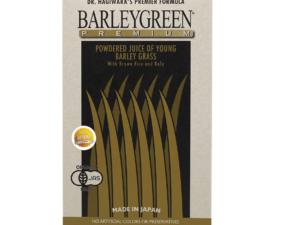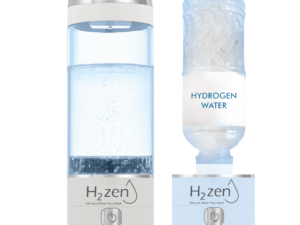Soluble Fiber for Digestion Wellness Group (+60123822655)
Did you know 90% of Malaysians don’t meet their daily dietary fiber needs? This gap affects gut health, energy levels, and overall wellness. The Wellness Group, a trusted name in digestive health, offers science-backed solutions to bridge this gap—starting with simple, local food choices.

Certain types of fiber, like the kind found in oats and black beans, form a gel-like substance in the gut. This slows digestion, helping the body absorb nutrients better. It also supports beneficial gut bacteria, which play a key role in immunity and metabolism.
Wellness Group’s experts provide personalized advice via WhatsApp (+60123822655). Their approach combines local Malaysian ingredients with proven health benefits, like lowering cholesterol and stabilizing blood sugar. This article will explore easy, tasty ways to boost fiber intake.
Key Takeaways
- Most Malaysians fall short of daily fiber recommendations.
- Soluble fiber improves nutrient absorption and gut health.
- Wellness Group offers tailored advice via +60123822655.
- Local foods like oats and beans are excellent sources.
- Supports cholesterol and blood sugar management.
What Is Soluble Fiber and How Does It Work?
Many people wonder how certain foods help regulate digestion and improve overall health. The answer lies in a unique component found in plant-based foods—soluble fiber. Unlike other types, this one forms a gel when mixed with water, offering distinct benefits.
The Science Behind Soluble Fiber

Click to LEARN MORE
When consumed, soluble fiber dissolves in water, creating a thick gel in the digestive tract. This gel slows down digestion, allowing better nutrient absorption. It also binds with cholesterol and sugars, helping manage their levels in the body.
Oats contain beta-glucan, a type of soluble fiber known for its heart-healthy properties. Similarly, pectin in apples and guavas helps regulate bowel movements without adding bulk. These mechanisms differ from how insoluble fiber works.
Soluble vs. Insoluble Fiber: Key Differences
Both types play crucial roles in digestion, but they function differently. Below is a clear comparison:
| Feature | Soluble Fiber | Insoluble Fiber |
|---|---|---|
| Dissolves in Water | Yes | No |
| Primary Function | Forms gel, slows digestion | Adds bulk, prevents constipation |
| Food Sources | Oats, apples, beans | Whole grains, vegetables |
| Gut Health Impact | Feeds beneficial bacteria | Promotes regularity |
Urban populations, like those in Malaysia, often benefit more from soluble fiber. A 70% soluble to 30% insoluble ratio is ideal for managing modern dietary challenges. Including both types ensures balanced digestive health.
Health Benefits of Soluble Fiber for Digestion
Modern diets often lack a crucial element that supports both gut and heart health. This nutrient, found in oats, beans, and fruits, offers science-backed advantages for Malaysians struggling with digestive discomfort or metabolic concerns.
Supports Gut Health and Regularity
When fermented in the colon, this nutrient produces butyrate—a compound that strengthens the gut lining. Studies show consistent intake improves stool regularity within 2-4 weeks, reducing bloating and irregularity.
It also acts as a prebiotic, feeding beneficial bacteria like Bifidobacterium. A thriving microbiome enhances immunity and energy levels, addressing common complaints like post-meal fatigue.
Lowers Cholesterol and Blood Sugar Levels
Psyllium husk, a rich source, binds to bile acids in the digestive tract. This process reduces LDL cholesterol by 11% with just 5-10g daily. For Malaysians at risk of heart disease, this is a game-changer.
Similarly, the gel-like substance slows glucose absorption, cutting post-meal blood sugar spikes by 30%. With diabetes affecting 18% of the population, prioritizing this nutrient can be a proactive step toward prevention.
Wellness Group’s experts highlight how local foods like black beans and apples make these benefits accessible. For personalized tips, reach out via WhatsApp (+60123822655).
Top Food Sources of Soluble Fiber
Local markets in Malaysia offer hidden gems for digestive wellness. From budget-friendly oats to versatile beans, these foods deliver gut-friendly benefits without breaking the bank. Here’s a breakdown of the best options:

Beans: Nutrient Powerhouses
Black beans lead the pack with 5.4g per 129g cooked, while kidney beans provide 3g per serving. Canned varieties (around RM6) save time—just rinse to reduce sodium. *Pro tip*: Soak dried beans overnight to cut cooking time and boost digestibility.
Vegetables: Easy and Affordable
Brussels sprouts (1.7g/82g) and sweet potatoes (1.8g/150g) are fiber-rich staples. For urban shoppers, frozen options retain nutrients. Steaming carrots preserves 30% more fiber than boiling—perfect for quick stir-fries.
Fruits: Sweet and Satisfying
Avocados (2.1g per half) and pears (1.5g each) make tasty snacks. Apples, with 1g per medium fruit, pair well with peanut butter. For a tropical twist, try local guavas (1.1g each).
Grains and Seeds: Small but Mighty

Click to LEARN MORE
Oats (1.9g/cup cooked) cost just RM3.50 per 500g. Flaxseeds need grinding to unlock benefits—sprinkle on yogurt for an easy boost. Barley, a lesser-known grain, works well in soups.
“Prioritizing whole foods over supplements ensures you get a mix of nutrients beyond just fiber.”
- Budget picks: Oats, kidney beans, carrots
- Quick prep: Steam veggies, blend flaxseeds
- Urban hack: Frozen Brussels sprouts save time
How Soluble Fiber Improves Digestive Wellness
Small dietary tweaks can transform digestive comfort and energy levels. Certain nutrients work behind the scenes to support gut health, easing common issues like bloating and irregularity. Here’s how they make a difference.
Fuel for a Thriving Microbiome
When fermented in the gut, these nutrients produce short-chain fatty acids (SCFAs). Studies show SCFAs reduce inflammation and strengthen the gut lining. A daily intake of 3g oat beta-glucan improves regularity by 40% within weeks.
For those with sensitivities, chia seeds are a gentler alternative to beans. Below is a quick comparison:
| Feature | Chia Seeds | Black Beans |
|---|---|---|
| FODMAP-Friendly | Yes | No |
| Soluble Fiber per 30g | 2.2g | 1.2g |
| Prep Time | Instant (soak 10 mins) | 90+ mins cooking |
Relief for Constipation and Bloating
Psyllium husk absorbs water, softening stool naturally. For those new to high-fiber diets, a gradual approach prevents discomfort:
- Start slow: Add 5g daily (e.g., 1 tbsp flaxseeds).
- Hydrate: Drink 1 extra glass water per 5g fiber.
- Monitor: Adjust based on stool consistency.
Signs it’s working:
- Softer stools within 3–5 days
- Reduced mid-day cravings
- Less bloating post-meals
“Pairing fiber with probiotics for bloating enhances results for sensitive stomachs.”
Soluble Fiber and Heart Health
Malaysians can slash heart disease risk with simple, everyday ingredients. Just 3g daily reduces this risk by 15%, research shows. The magic lies in how it binds to cholesterol, flushing it out before arteries clog.
Oats lower LDL by 8%, while psyllium husk outperforms at 12%. Both form a gel that traps bile acids, forcing the liver to use excess cholesterol. This mechanism also drops systolic blood pressure by 5.9 mmHg.
Avocados pair magnesium with soluble fiber, doubling heart benefits. A 30-day plan might include:
- Breakfast: Oatmeal with flaxseeds (3g)
- Lunch: Black bean soup (5.4g per serving)
- Snack: Guava with skin (1.1g)
Overdoing it? More than 50g daily may block iron absorption. Hydration is key—aim for 8 glasses to keep things moving smoothly.
“Pairing fiber-rich foods with healthy fats, like olive oil, maximizes cholesterol-lowering effects.”
For Malaysians, small swaps—like barley instead of white rice—add up. Reach out to Wellness Group (+60123822655) for personalized heart-smart meal plans.
Daily Fiber Intake Recommendations
Meeting daily fiber goals doesn’t require drastic diet changes—just smart swaps. Malaysian men need 38g daily, while women require 25g. Yet, the average intake is only 18g. Below, a guide to hitting targets with local foods.

Age & Gender-Specific Needs
| Group | Daily Goal (Grams) | Local Equivalent |
|---|---|---|
| Men (18–50) | 38g | 2 cups oats + 1 guava |
| Women (18–50) | 25g | 1 cup barley + ½ avocado |
| Seniors (51+) | 22–28g | 1 sweet potato + 1 pear |
Sample Meal Plan (Malaysian Edition)
Hit 30g/day with these tweaks:
- Breakfast: Oatmeal with flaxseeds (5g) + teh tarik (swap condensed milk for almond milk).
- Lunch: Nasi lemak with brown rice (+3g) and cucumber slices (1g).
- Dinner: Stir-fried Brussels sprouts (4g) with tofu.
Hydration & Common Mistakes
Drink 35ml water per kg of body weight. Fiber works best with fluids. Avoid these pitfalls:
- Adding too much too soon (start with +5g/day).
- Ignoring water intake (leads to bloating).
- Relying only on supplements (whole foods offer nutrients).
“Track intake with apps like MyFitnessPal’s Malaysian database for accurate local food logging.”
Tips to Add More Soluble Fiber to Your Diet
Boosting nutrient intake can be as simple as smart food swaps. Malaysians can upgrade favorite meals with gut-friendly tweaks that take minutes. Start with breakfast—the most important meal for setting daily habits.
Breakfast upgrades: Swap roti canai for oats porridge with soaked flaxseeds. Soaking overnight boosts nutrient availability by 30%. Add local fruits like bananas for natural sweetness.
Snack smarter: Replace keropok with roasted chickpeas or pumpkin seeds. These provide 3g per handful and curb afternoon cravings. Keep portion-controlled bags in your desk drawer.
Modify popular dishes easily:
- Add bean sprouts to laksa (1.5g extra per bowl)
- Use barley instead of white rice (+3g per serving)
- Blend chia seeds into teh tarik (2g per teaspoon)
Kitchen tools that help:
- High-speed blender for seed smoothies
- Steamer for veggies (retains 40% more nutrients)
- Glass jars for overnight oat prep
“Try our 7-Day Challenge: Shop for oats, flaxseeds, and local beans on Sunday. Prep three breakfast jars and two snack portions for effortless weekday wins.”
Hydration matters—drink one extra glass of water for every fiber-rich meal. This prevents bloating while helping the nutrients work effectively.
Contact Wellness Group for Expert Advice
Navigating dietary changes is easier with professional support tailored to your needs. The Wellness Group team offers science-backed guidance to help Malaysians make sustainable adjustments for better gut and heart health.
Personalized Support When You Need It
Their certified nutritionists provide:
- Free 15-minute consultations via WhatsApp (+60123822655)
- Meal plans using local ingredients to boost nutrient intake
- Fiber assessment quizzes to identify improvement areas
With over five years specializing in gut health, their experts create strategies that fit busy Malaysian lifestyles. Services are available:
- Monday-Friday: 9:30am-6:30pm
- Weekends: 10am-5pm
“After following Wellness Group’s plan, Ahmad lowered his cholesterol by 18% in two months while still enjoying nasi lemak—just with smarter ingredients.”
They focus on practical diet adjustments that reduce health risks without sacrificing flavor. For those exploring probiotic options, their team can recommend complementary approaches.
Start with a quick WhatsApp message to schedule your personalized health evaluation today.
Conclusion
Making small, sustainable changes can lead to lasting digestive wellness. Start by incorporating oats, beans, and local fruits into meals—gradually increasing intake over 4–6 weeks avoids discomfort.
Remember these key takeaways:
- Soluble fiber supports gut health and heart health.
- Local foods like guavas and barley make meeting daily goals easy.
- Hydration is essential for optimal results.
For personalized guidance, Wellness Group’s experts are just a WhatsApp message away (+60123822655). Download their free fiber-rich recipe eBook to kickstart your journey.
Ready to transform your health? Reach out today for a consultation tailored to your needs.
FAQ
What is soluble fiber?
Soluble fiber dissolves in water, forming a gel-like substance that helps slow digestion. It supports gut health and can lower cholesterol and blood sugar levels.
How is soluble fiber different from insoluble fiber?
Unlike insoluble fiber, which adds bulk to stool, soluble fiber absorbs water and helps regulate digestion. Both types are essential for a balanced diet.
What foods are high in soluble fiber?
Oats, beans, avocados, apples, and flaxseeds are excellent sources. These foods promote digestive wellness and overall health.
How does soluble fiber improve digestion?
It feeds good gut bacteria, reduces bloating, and helps maintain regular bowel movements by softening stool.
Can soluble fiber help with heart health?
Yes! It helps lower LDL (“bad”) cholesterol, reducing the risk of heart disease when consumed as part of a balanced diet.
How much fiber should someone eat daily?
Women should aim for 25 grams, and men for 38 grams per day. Including a mix of soluble and insoluble fiber is best.
What’s an easy way to add more soluble fiber to meals?
Start the day with oatmeal, snack on fruits like pears, or add beans to soups and salads for a fiber boost.
Where can I get expert advice on fiber intake?
Wellness Group offers personalized guidance. Reach out via WhatsApp at +60123822655 during business hours for support.

Khloe Tan
Khloe Tan is a Certified Nutritionist, Corporate Wellness Trainer, and Holistic Health Specialist with over 15 years of experience in the health and wellness industry. She has delivered more than 100 talks nationwide, inspiring and educating diverse audiences on nutrition, lifestyle, and sustainable wellness. Her work has positively impacted over 3,000 lives, and she continues to champion holistic approaches to well-being in both corporate and personal settings.
Feature Product
-
Hydrogen Water FIlter/Generator
H2zen Portable (White/ Blue)
RM2,600.00 Add to cart Buy NowRated 0 out of 5





